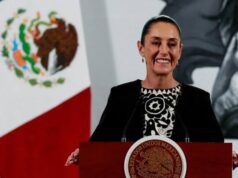Temple entry has been a key issue in Kerala’s history
By P K BALACHANDRAN
Source: Daily Mirror
The on-going imbroglio over admitting women of reproductive age into the 800-year old Ayyappan temple in Kerala, which has engulfed the entire State, is not the first temple entry controversy in this south Indian State. The issue has been a feature of social, political and economic development in Kerala since the first half of the 20th Century.
The factors underlying temple entry movements have changed over time. But every time, conservative forces wedded to the continuation of tradition, no matter how repugnant they may be to progressive minds, have put up very stiff resistance.
In the current crisis at the Ayyappan shrine in Sabarimala, a determined bid by women of reproductive age group (10-50 years of age) to defy the ban on entry is being resisted tooth and nail by a coalition comprising the temple management and right wing political parties and social groups like the Bharatiya Janata Party (BJP) and the Nair Service Society (NSS). Even the “secular” Congress party is opposing the women’s movement. Only the ruling Communist Party of India (Marxist) and its left wing allies are supporting the movement, which is also backed by a Supreme Court ruling which lifted the ban on women on September 28 last year.
The Ayyappan temple entry issue has gathered tremendous force given the fact that political parties are gearing up for the Indian parliamentary elections in April-May 2019.
In 1920s and 1930s
While the women devotees of Ayyappan are still to succeed, those who conducted temple entry movements in the 1920s and 30s had succeeded, albeit after long drawn out struggles. They were landmarks in social reform and the nationalist movement in Kerala, says M.R.Manmathan of Calicut University in his monograph: “Temple as the site of struggle.”
In the 1920s, the powers-that-be, namely, the Maharajah of Travancore and upper castes like the Namboodiris and Nairs, were against a bid by the Ezhavas and other lower castes to enter temples which were then considered to be the exclusive preserve of the upper castes.
The Congress party, which was then fighting for India’s independence from British rule, and also for the emancipation of the lower castes from disabilities like “untouchability” and “unseeablility”, was on the side of the depressed castes. The battle, which waged over years, resulted in the temples throwing their doors open to lower castes.
Studies on these movements generally give credit to the reformist zeal of the independence movement led by Mahatma Gandhi. According to Manmathan, there have been very few studies linking temple entry movements to the pressure exerted by the untouchables to achieve civic freedom by all means, including leaving Hinduism and embracing Islam or Christianity, which offered social equality.
The part played by the Moplah Muslim rebellion of 1921-22 is also ignored. The Moplah agitation began as an agrarian one relating to terms of tenancy. Land was controlled by the government-backed upper Hindu castes such as the Namboodhiris and Nairs. Moplah Muslims were only tenants with a very insecure tenancy. However, it did not take long for the agrarian movement to become an anti-Hindu and a violently Islamic rebellion.
The Congress Party, then led by Mahatma Gandhi, initially backed the Moplah Muslim agitation because it was seen as being part of its struggle against British rule. At that time, Gandhi was supporting the Islamic Caliphate in Turkey against the Western imperial powers who wanted the Ottoman Empire-based Caliphate to be dismantled after its defeat in the First World War.
But when forcible conversions of Hindus and murderous attacks on Hindu landlords became the order of the day in South Malabar, the Congress Party washed its hand off the Moplah cause. The Congress Party then felt the need to strengthen the Hindus. This it did by promoting Hindu unity which was then challenged by pernicious caste differences and gross inequalities.
While the women devotees of Ayyappan are still to succeed, those who conducted temple entry movements in the 1920s and 30s had succeeded
The party took up the cause of the deprived Ezhavas and others who were trying to gain entry into Hindu temples. At that time the “untouchables” included the Izhavas, Pulayas, Cherumas, Parayas and Nayadis. There were the fishing and tribal communities besides Pulayas, Parayas and Cherumas who served as agricultural laborers or serfs. Untouchability, unapproachability and even un-seeability determined inter-caste relations.
“The Ezhavas were not allowed to enter temples managed by the upper castes. They also did not have the right to use public roads and wells of the upper castes and were denied admission in caste Hindu schools and government jobs. Their women were not allowed to wear upper garments or any ornaments. The Nairs often demanded unpaid labour (uzhiyam) from them,” Manmathan says.
“Under the three-tier agrarian social structure, most Izhavas occupied the position of sub-tenants or agricultural laborers. Most of the janmis were Nambutiris, Kshatriyas or aristocratic Nairs. Kanam tenants, who held the lease for a period of twelve years (but sub-leased them), were mainly Nairs. Verumpattam was the lease for a three year tenure and Izhavas and Mappilas were the prominent sub-tenants. Agricultural laborers formed an important category, and this consisted of the Izhavas, Pulayas and Cherumas.” Manmathan adds.
Taking up the causes of the depressed castes, the Congress in Kerala switched from being a party with a political agenda to one with a “Hinduistic” agenda, promoting Hindu unity by breaking social barriers between castes.
Ezhava Factor
The Congress party’s socio-religious movement was helped by a parallel movement of Hinduization among the lower castes, especially the Ezhavas.
Initially, the Ezhavas and other depressed castes were turning to Christianity, Islam and even Buddhism for their social and economic salvation. However, eventually, the move to remain in Hinduism and claim modern-day their rights within it won the day, thanks to the leadership of Sri Naranyana Guru. One writer pointed out that the upwardly mobile and Sanskritizing Ezhavas did not want to be dominated by “arrogant” Syrian Christian landlords and be “polluted” by low caste converts to Christianity.
Narayana Guru Sanskritized Ezhava social customs, rituals and ceremonies. Aryan gods replaced primordial deities. Learning of Sanskrit was encouraged. Schools to teach Vedanta were opened. The abolition of slavery under British rule in the Malabar area, which they British ruled directly, also helped the Ezhavas emerge from servitude.
The abolition of slavery in mid-19th Century and the spread of modern education thanks to Christian missionaries and the enlightened rulers of Travancore in the 20th Century, also created new demands and generated courage to struggle for these.
In 1896 the Izhavas of Travancore submitted a memorandum signed by 13176 men known as “Izhava Memorial”, calling upon the government to open public schools and services to them.
In 1924 the Congress organized a 20 month-long Satyagraha at the Vaikom temple with the aim of securing the right to use the approach roads of the temple for the untouchables. It attracted all-India attention. In 1928, approach roads to all temples in Travancore were thrown open to all. There was a temple entry movement at the Sri Krishna temple at Guruvayoor also.
Taking up the causes of the depressed castes, the Congress in Kerala switched from being a party with a political agenda
However, the Congress leadership in Kerala refused to address the economic issues underlying socio-religious unrest. It looked at the unrest from a religious perspective “as unfortunate aberrations of spiritual injunctions”, as Manmathan says.
Neglect of economic issues by the Congress resulted in the Communists gaining ground in Kerala in the 1950s. The alienation from the Moplahs in 1921-22, led to the Muslims coming under the banner of the Muslim League. The Christians eventually came under the banner of the “Kerala Congress” as distinct from the Congress party, officially known as Indian National Congress (INC). Only the Communists have been secular throughout.




